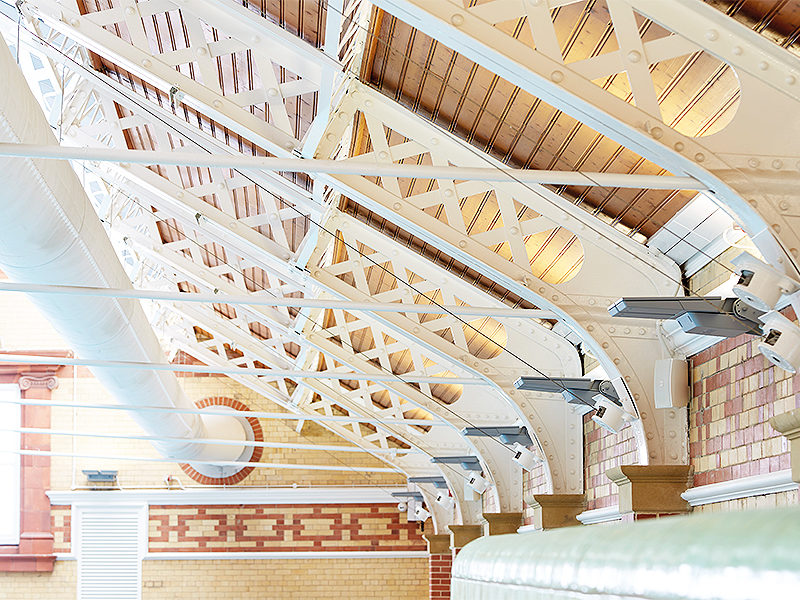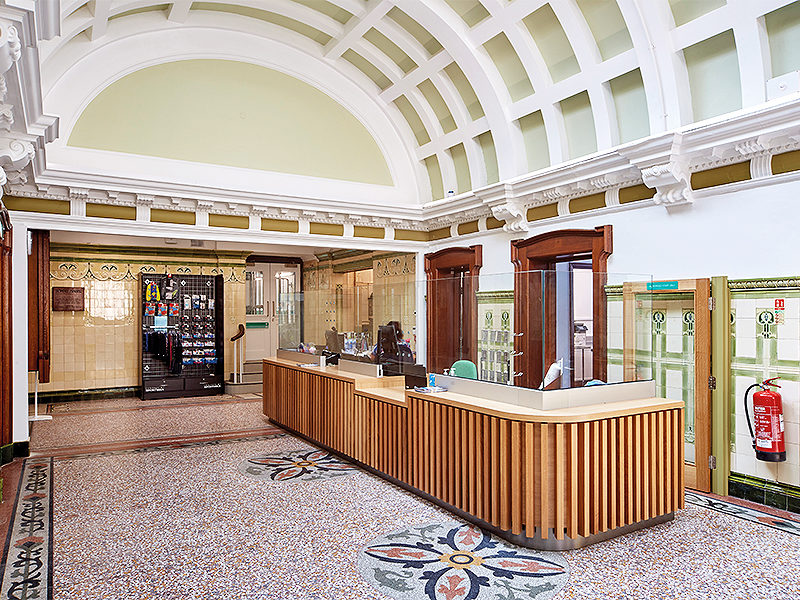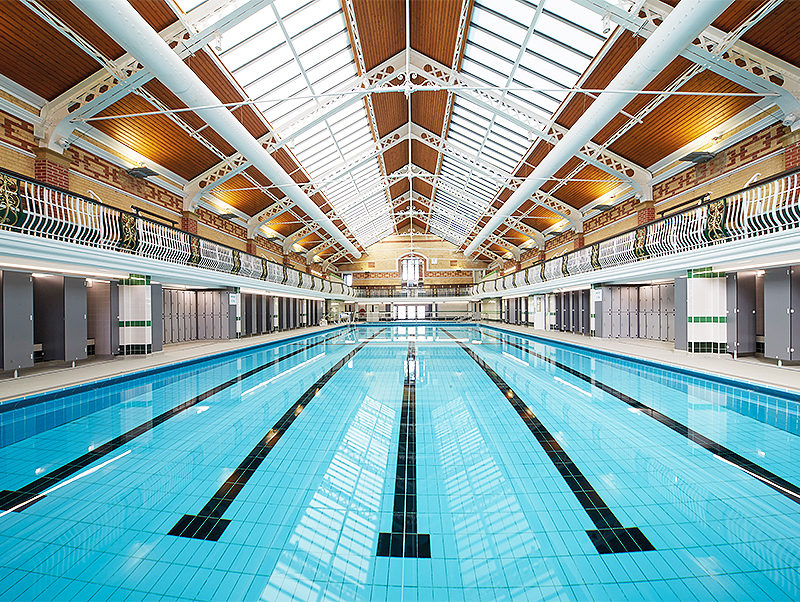Yorkshire-based construction firm, Hobson & Porter, has recently refurbished the historic Beverley Road baths in Hull and is now transforming the city’s Albert Avenue Pools and restoring its much-loved lido. Richard Hunter, Managing Director at Hobson & Porter, talks to PSBJ about key considerations in the sensitive restoration of historic leisure facilities.
Hobson & Porter
Last year, we completed work on the refurbishment of one of Hull’s most characterful buildings that was built more than a century ago.
Beverley Road Baths opened to the public in May 1905 and ever since, it has been a focal point for families and individuals in the heart of a popular community, as well as playing an important role in Hull’s heritage.
However, it was in need of major upgrades and became part of Hull City Council’s £18.5m investment programme into its leisure facilities across the city, which is being delivered by Hull Esteem Consortium LEP, the council’s pre-procured framework.
The Grade II Listed building and its many original features have now benefitted from extensive upgrades that all complement its rich history. Major improvements were made to the main reception area and essential repairs to the fabric of the Grade II Listed building, including a new roof and rooflights as well as refurbishing its windows. Specialist external remedial stoneworks were also undertaken to restore the facade to its former glory; completed by one of the only conservation stonemasons in the region.
The mechanical and electrical systems were completely replaced, and a new ventilation system was installed. As part of the £3.7m project, we also built a new gym, as well as refurbishing the existing one, and installed new and improved steam and sauna facilities.
In addition, we refurbished the poolside area and all changing facilities to create a high-specification and modern facility that will benefit the local community for many decades to come.
Beverley Road Baths closed to the public in June 2020 and reopened in August 2021. Throughout the project, we worked closely with the council’s conservation team to ensure the refurbishment remained sympathetic to the building’s history and in a combined effort to preserve as much of the original structure, and its features, as possible.
A key challenge during the project was a lack of ‘as-built’ information given the age of the building, so we had to carry out extensive surveys in the pre-construction phase to understand what was behind and beneath in terms of drainage, services, build materials and structural information.
Throughout the project, it was necessary to strike a fine balance between delicate ‘as-original’ restoration and modernisation of the facility to maximise operational efficiency and access for all.
This often meant keeping as much of the necessary modernisation ‘behind closed doors’ in service areas and plant rooms so not to impact the user experience or distract from the enormous historic importance the building has.
We also had to ‘make good’ some aged remedial works that did not complement the historic attributes of the building. For example, the original roof glazing had been overlaid with polycarbonate sheets some decades ago. These were removed and the original window frames were repaired and re-fitted with sympathetic solar-attenuating glazing panels, which were in keeping with the building, whilst also optimising its energy performance.
In addition, we had to construct a timber, suspended floor over a decommissioned baths structure to form the new gym area.
Following the project’s success, earlier this year we started work on the £10.5m refurbishment of Hull’s Albert Avenue Pools and the rebuild of its historic lido.
The project will see the construction of a large new gym and fitness studio that will offer aerobic classes for the first time, remodelling, refurbishment and redecoration of the existing building, replacement of all mechanical and electrical systems, alongside new heating and ventilation systems.
The scheme also includes the construction of a brand-new outdoor heated lido, replacing the original one which closed more than 30 years ago. The lido will meet international standards to accommodate top-level kayak polo and competitive swimming.
Again, the project is being delivered by Hull Esteem Consortium LEP, and it’s set to become the final piece of Hull City Council’s investment in its leisure assets.
Starting work follows many months of hard work to design and develop the project. Again, it’s been vital to conduct extensive surveys to learn as much about the building and its external areas as is practically possible during the preconstruction phase in the absence of ‘as-built’ information given it dates back to at least the 1930s.
We’ve worked hard to plan, co-ordinate and integrate what is essentially three projects into one, with the new extension, the extensive building refurbishment and the rebuilt lido each forming a multi-million-pound complex construction project in its own right.
We’re also working in exceptionally-poor ground conditions, which is typical in Hull, and near to existing building structures, some of which are near 100 years old, and local residents. There are four areas of driven piling to complete spanning the new gym extension, new changing village extension, new plant room extension and the new lido structure.
Prior to these works, Albert Avenue Pools was already one of the largest wet leisure facilities in the region with both a 30m and 20m heated indoor pool. With the addition of the large, new heated lido, the volume of heated, filtered swimming water at the facility will increase from around 750,000 litres to over two million litres, which gives some indication of the scale of the plant rooms required to run the facility.
I was lucky enough to be involved in the last major refurbishment of Albert Avenue Pools in the mid ‘90s, although it did not reflect the scale of the project we are delivering now.
When it reopens in 2023, it promises to be a superb facility. The lido will undoubtedly become the jewel in the crown and will attract visitors from across the region and beyond, which all combines to make it one of the most significant leisure projects currently underway in the north of England.











